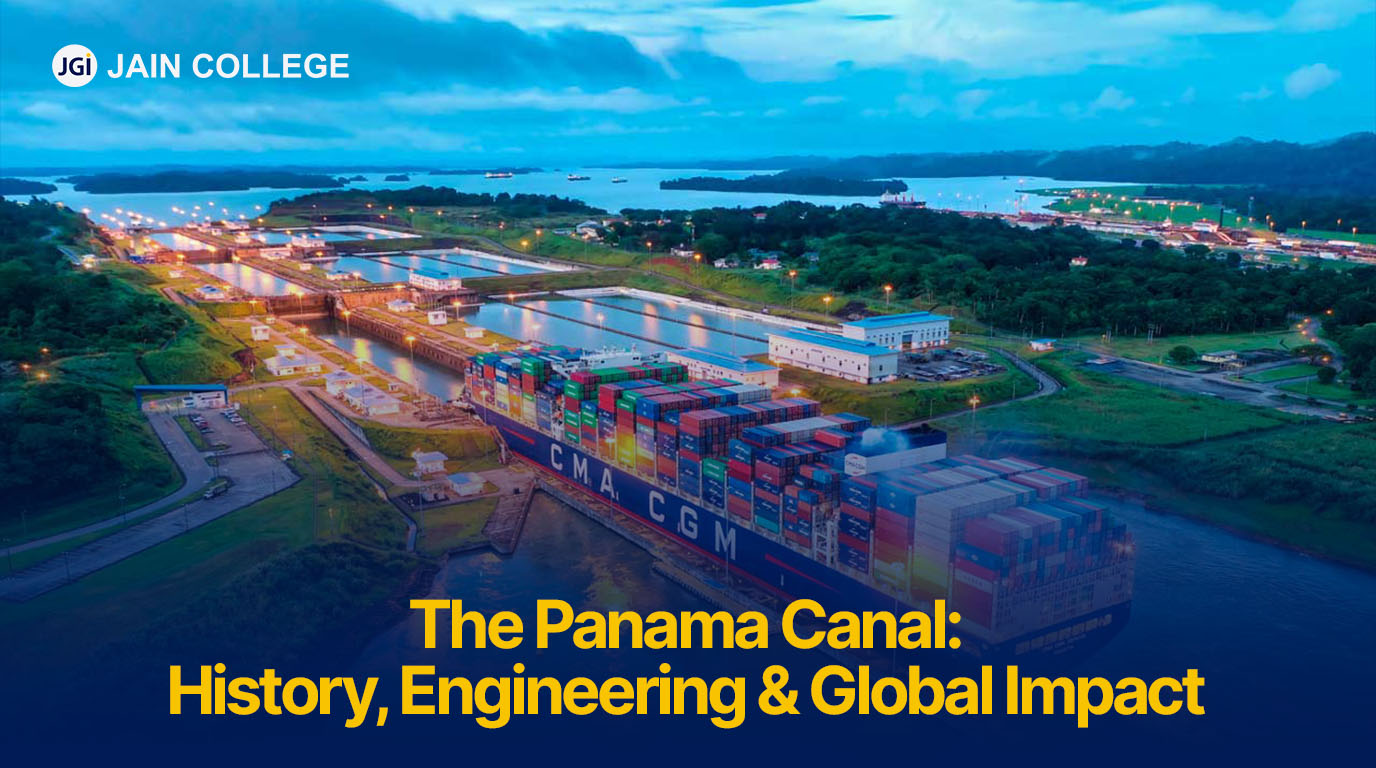
Have You Ever Wondered How Ships Travel Between the Atlantic and Pacific Oceans?
Imagine a journey that once required sailing around the entire continent of South America, now reduced to just a few hours. This incredible feat is made possible by one of the world's most impressive engineering marvels: the Panama Canal. Located in Panama, this canal has revolutionized global trade and maritime travel. But how did it come to be? What is the panama canal history? Who built it? And what makes it so remarkable?
The Panama Canal stands as one of the most significant engineering achievements in human history, revolutionizing global trade by connecting the Atlantic and Pacific Oceans. This 80-kilometer (50-mile) artificial waterway runs through Panama, a country in Central America, renowned for its strategic location. It allows ships to pass through with ease, eliminating the need to sail around the entire continent of South America, a route that once added weeks to transit times.
The canal’s construction was a remarkable feat, beginning with French attempts in the late 19th century but ultimately being completed by American engineers between 1904 and 1914. Today, this engineering marvel ensures efficient and cost-effective transportation between the two oceans, drastically reducing both time and costs for international shipping.
The Panama Canal is situated in Panama, connecting Colon on the Atlantic side with Panama City on the Pacific side.
Initially, France attempted to build it but failed due to numerous challenges. The United States took over and successfully completed it under President Theodore Roosevelt's leadership.
Construction began in earnest under U.S. supervision from May 4, 1904, until its completion on August 15, 1914.

Situated in the Central American nation of Panama, the canal links the city of Colón on the Atlantic coast with Panama City on the Pacific side. This narrow isthmus provides an ideal passage, making Panama a strategic hub for global maritime trade. The canal's location underscores its importance, as nearly 5% of the world's total trade volume passes through it each year.
The initial attempt to construct the Panama Canal was undertaken by the French in 1881 under the leadership of Ferdinand de Lesseps, the engineer behind the Suez Canal. However, the project faced immense difficulties:
The United States took over the project in 1904, introducing superior engineering techniques and extensive disease control measures. Under President Theodore Roosevelt's administration, significant advancements were made:
On August 15, 1914, the first official transit was made by the cargo ship SS Ancon, marking a new era for maritime navigation.
| Phase | Years | Constructor |
| First Attempt | 1881-1889 | France |
| Successful Completion | 1904-1914 | United States |

The Panama Canal operates using a lock-based system, elevating ships to the height of 26 meters (85 feet) above sea level before lowering them back down at the opposite coast.

The construction of the Panama Canal dramatically altered global trade patterns, providing the following benefits:
| Benefit | Description |
| Lower Fuel Consumption | Ships avoid long, fuel-intensive routes around South America. |
| Higher Trade Volume | Enables passage for 14,000+ vessels annually, carrying nearly 300 million tons of cargo. |
| Increased Efficiency | Reduces transportation costs and boosts the speed of global supply chains. |
The canal generates billions of dollars annually in toll revenue, significantly contributing to Panama’s GDP and employment rates.

In 2016, the Panama Canal underwent a major expansion to accommodate larger vessels known as Neo-Panamax ships. The project included:
Despite its success, the canal faces several challenges:
The Panama Canal remains a crucial gateway for global commerce, demonstrating both human ingenuity and the power of engineering. From its tumultuous construction to its modern expansions, this marvel continues to shape international trade, ensuring efficient and cost-effective transportation between the world’s two largest oceans. As technology advances, the canal will undoubtedly evolve, further solidifying its role as one of the greatest infrastructural achievements in history.
The Panama Canal remained under U.S. territory until 1977, when the Torrijos-Carter Treaties initiated the transfer of control to Panama. This process was fully completed on December 31, 1999.
It takes approximately 8 to 10 hours for a ship to pass through the canal, depending on traffic and lock operations.
The Panama Canal is well known for providing a crucial shortcut between the Atlantic and Pacific Oceans. It significantly reduces travel time for ships, allowing them to bypass the long and dangerous journey around the southern tip of South America through the Drake Passage, the Strait of Magellan, or the Beagle Channel.
Transit fees vary but can range from $50,000 to over $450,000, depending on the ship's size and cargo.
The Neo-Panamax ships, measuring up to 366 meters (1,200 feet) in length, are the largest vessels that can transit the expanded canal.
On average, more than 14,000 ships transit the canal each year, carrying over 300 million tons of cargo.
The Panama Canal is located within Panama, with the country itself on both sides of the canal. Nearby, Colombia borders Panama to the southeast in South America, while Costa Rica lies to the northwest in Central America.
Stay tuned for more such insights—follow our blogs for more updates!

JAIN PU College, a part of the renowned JGI Group, is committed to empowering students with quality education.
Beyond academics, the college ensures its online content reflects the same standard of excellence. Every blog and article is meticulously vetted and proofread by subject matter experts to ensure accuracy, relevance, and clarity. From insightful educational topics to engaging discussions, JAIN PU College's content is crafted to inform, inspire, and add value to its readers, reflecting the institution's commitment to intellectual growth and innovation.
View all Blogs